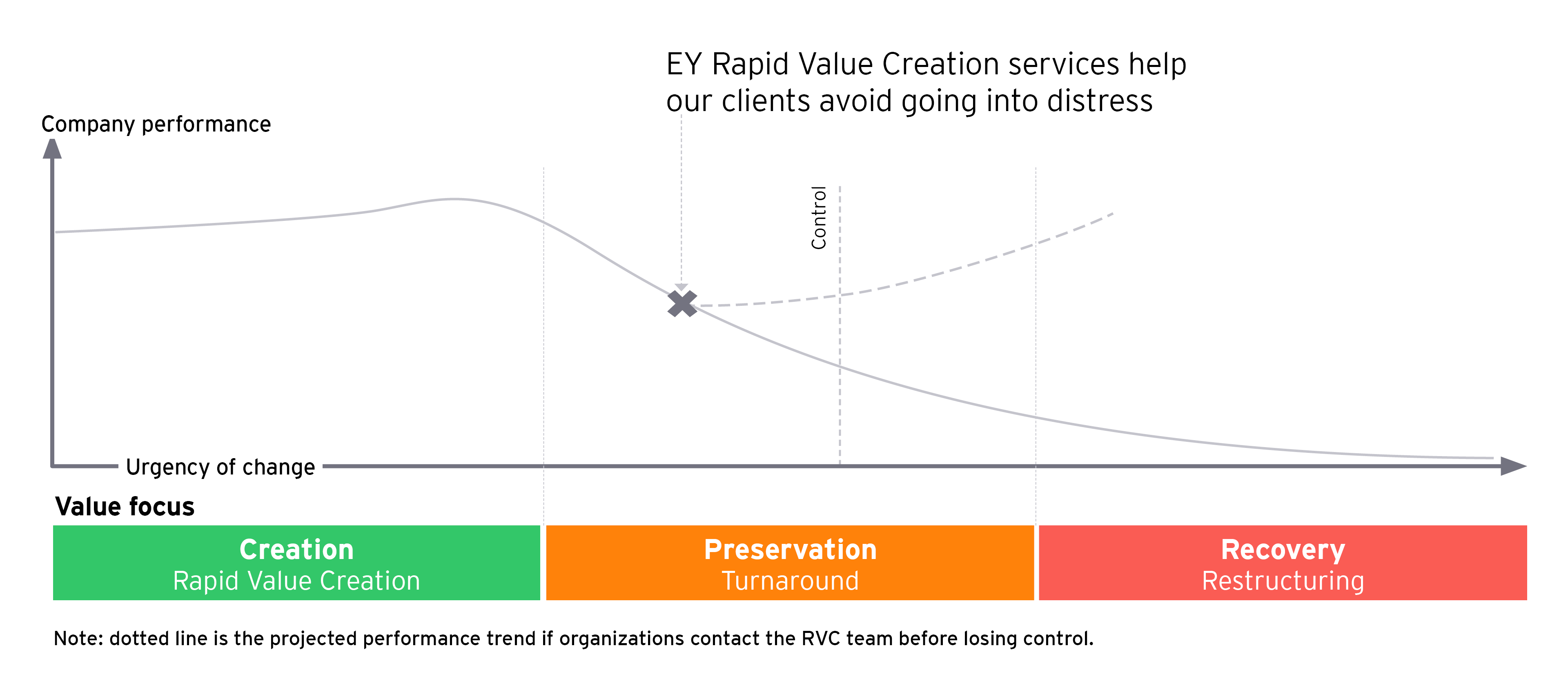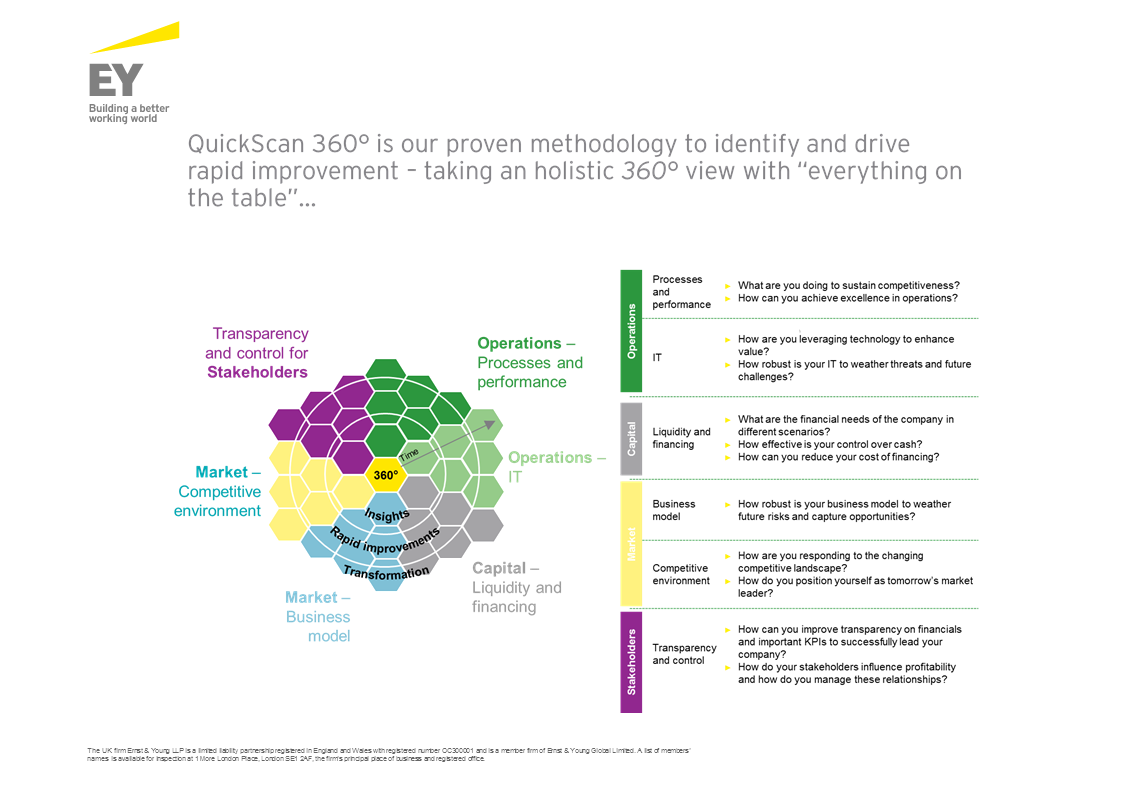Rapid performance improvement
In virtually all industries today, companies are determining the best path to navigate the COVID-19 pandemic, geopolitical uncertainty and sector disruptions. Time is of the essence. Business leaders must consider and implement immediate actions to rapidly improve performance.
What EY can do for you
Most businesses are likely to experience operational challenges and underperformance at some point. While the root causes can be buried below the surface, the negative impact can be highly visible — profit warnings, declining performance metrics, failure to achieve project milestones, loss of customer contracts or management departures.
Whether a business is in crisis or simply faced with a challenge, we help management teams identify the issues, stabilise the business and provide tangible results quickly.
We dive into the issues across operations, market, capital and the full range of stakeholders, and deploy financial and operational professionals to improve cash flow, enhance shareholder value and provide a sustainable growth platform.
Common challenges we help you to solve:

Creation |
Preservation Turnaround |
Recovery Restructuring |
|
|---|---|---|---|
Indicators |
|
|
|
EY value proposition
How we can help
Whether a business is in crisis or simply faced with an operational challenge, our team is experienced in helping management teams identify and prioritise the most critical issues, stabilise the business, establish a leadership and stakeholder consensus around the solution and deliver tangible results quickly.
We seek to transform outcomes by:
- Identifying and prioritising the most critical business issues
- Establishing a leadership and stakeholder consensus around the solution
- Delivering tangible results quickly
More information on our Quickscan 360 approach can be found here.

- Proven track record of maximizing value and performance improvement
- Hands-on support from seasoned professionals, including interim management and contract research organization services
- A “future-back” perspective, incorporating a customer impact and investor lens
- Broad, integrated offering with full suite of industry, functional and operational capabilities
- Pragmatic and sustainable answers, not “slash and burn” strategies
- Promotion of a collaborative methodology to identify real opportunities with a focus on long-term value creation
Addressing your cost and capital needs today to fund your future for tomorrow
SG&A and operations
Where can I streamline my business operations to be more cost efficient and resilient to fluctuations in revenues?
- Operating model: Only 35% of large companies say they are making good progress in their digital transformations.
- Labor productivity: 70% of organizations believe that productivity is a concern with remote working.
- Third-party spend: 50% of Fortune 100 companies' expenditures involve third parties.
- EY employs leading practice tools such as ZBB to identify which cost levers a company should pursue to maximize profitability.
Revenue and margin
In what areas do opportunities exist to optimize products and customers to drive topline growth and gross profit?
- Cost of goods sold: 41% of companies are accelerating plans to automate as a result of the coronavirus, which will impact the cost of goods.
- Price and promotions: 20% of manufacturer revenue is invested on trade promotions (pdf).
- Customer demand: Responding to changing customer trends, 75% of organizations selling direct to consumers will offer subscription services by 2023.
Capex and cash
Where can we free up capital from operations that can be redeployed for growth or for a stronger balance sheet?
- Working capital: The average amount of working capital carried by companies amounts to 5% of total revenue.
- Capital portfolio: The average real estate costs at most companies amounts to 3%-5% of total revenue.
- Tax savings: The average indirect tax burden at most companies amounts to 25% of total personnel expenses.
The team
Contact us
Our team brings you:
- A practical, hands-on approach
- Insightful operational and sector experience
- Analytical tools to establish fast facts about performance
- Financial background, bringing rigour to decision making
- Deep experience of working quickly in an uncertain environment
- Client tailored solutions
Our latest thinking
Explore how Restructuring can help
- Improving liquidity and working capital
- Leading the restructuring and turnaround
- Rapid performance improvement
- Debt restructuring, raising capital and M&A
- Addressing your pension challenges
- Simplifying your corporate structure
- Preserving stakeholder value
- Contingency planning and insolvency options


